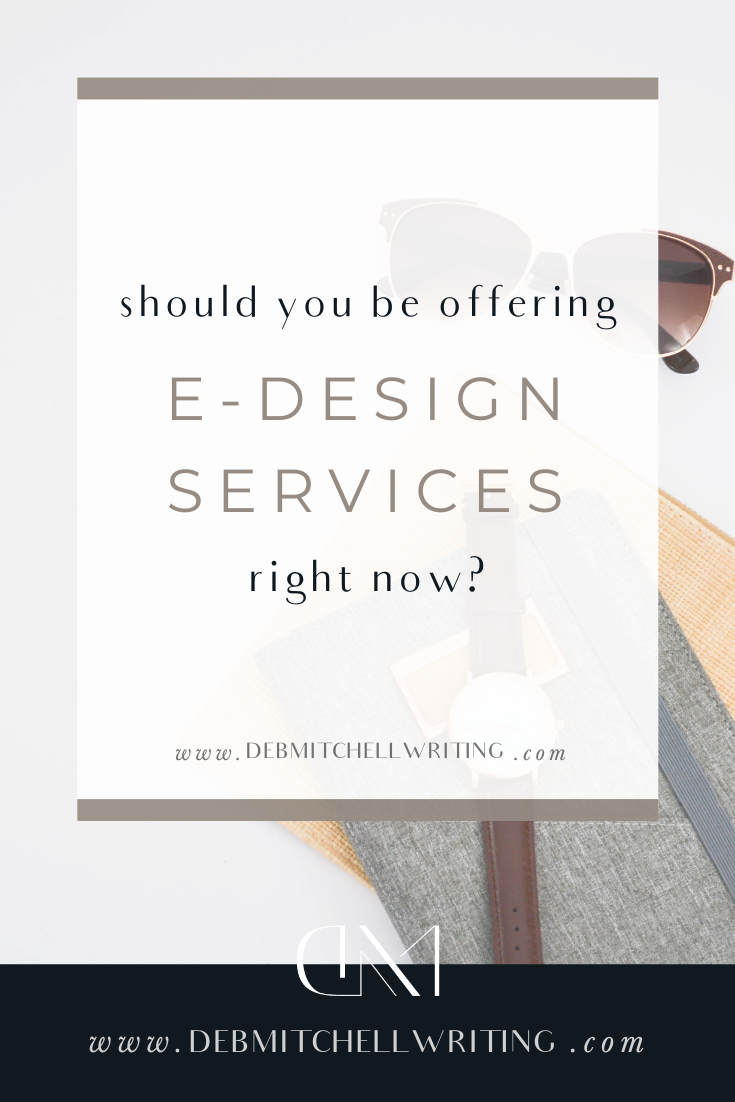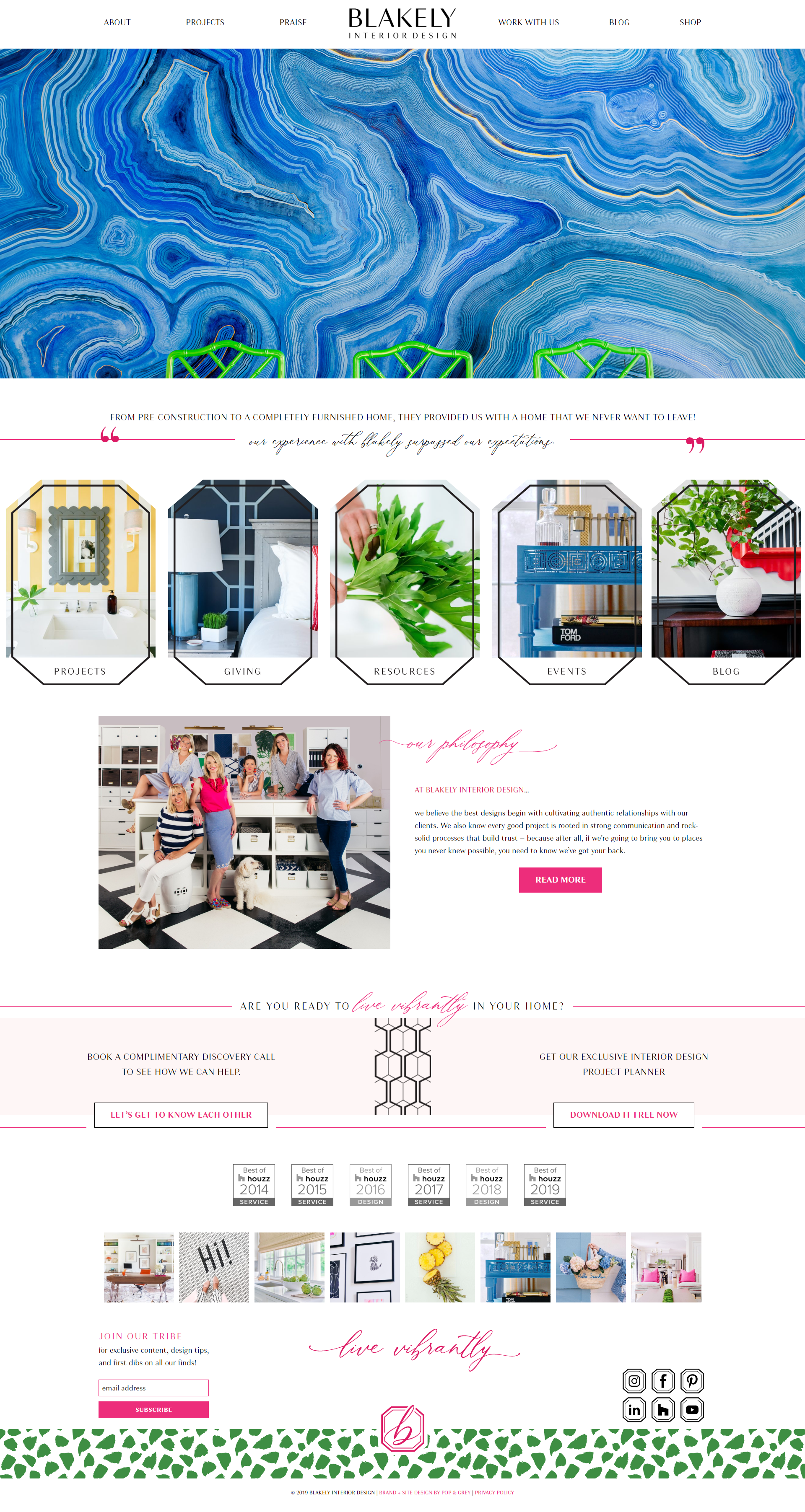
Have you been seeing all the articles, blog posts, and podcasts about pivoting to e-design services in the midst of this quarantine crisis?
Everyone’s talking about whether or not to make this change and, if you do, exactly how do you package and price your new offer?
But there’s something crucial about all of this that I’m not hearing anyone say:
Changing from full-service design offerings to e-design services is not a pivot – it’s a full-blown turn in another direction.
And if we’re talking about finding a way to serve clients when you can’t work with them in person, I think there’s more than one option.
When we think of e-design, we usually think of moodboards, paint samples, and links to retail products, right? There’s absolutely nothing wrong with that, but if you want to offer it (even temporarily) it’s important to recognize that e-design is essentially a DIY approach with a professional planning component.
This means two major changes for you if you’ve been doing primarily full-service projects:
You won’t be sourcing and selling products to the client and you’ll need to market to a very different client type.
That doesn’t sound like a pivot to me. It sounds like a very big turn in a very different direction.
A pivot would be morphing your full-service design process to include client meetings and design presentations over Zoom, and doing all you can to eliminate or minimize site visits (if at all possible, shifting any that are absolutely necessary to post-quarantine).
Of course, this has its own set of challenges, not the least of which are factory shutdowns and the resulting delivery slowdowns to come. But the bonus is that in finding a way to make these changes now, you’re also creating a process you can use going forward for clients who actually live out of your area without needing to charge them a boatload of travel fees.
That said, it’s entirely possible that offering e-design services could be the right thing for you to do. And I certainly don’t want to minimize the fact that if you’re considering it, it’s because you’re worried about paying your bills. However, I think it’s important that every designer approaches it like the major business decision it is and not just as a minor pivot.
I think there are 3 questions you need to explore in order to make this decision in the most strategic and informed manner possible.
1. Exactly who are the clients that are willing and eager to purchase e-design services from you?
Again, e-design means the client will be doing the implementation and as such, they’ll be limited to retail products. It’s probably fair to guess that most clients who would be interested in full-service design if we weren’t in a pandemic will feel like that’s a downgrade to some degree from the service and products they’d truly want to invest in.
It’s also probably fair to guess that many of those clients will want to wait until they can “do it right” instead of spending even a relatively small amount of money and a good deal of their time on an e-design that they’ll ultimately view as a stop-gap compromise.
Even if this clientele does purchase an e-design package out of sheer desperation, you risk them seeing the work you do for them as just that – a less-than-ideal desperate measure.
Unless you’re confident that you can truly knock these clients’ socks off with the process and results of your e-design service, you really need to market it to a very different kind of client – a client for whom you can be their design hero despite e-design’s inherent limitations.
2. How will you reach these clients with your marketing?
Really, this is the same as reaching any client type – and it’s not always easy.
Of course, you need to “go where they are” online in terms of the social media platforms they tend to use. But you also need to know how to talk to them – what to say and how to say it so they’ll pay attention.
When I write my clients’ website copy, I develop an entire messaging strategy around the interior design clients they’re trying to reach. I create a brand voice that will resonate with them and use language they’ll understand. I put a heavier emphasis on content that addresses their concerns and speaks to their own value system when it comes to their home and its design. And I pull forward my client’s differentiators – the aspects of their character, their personality, the service experience and results they deliver. Anything that’s unique about the designer that I know will matter to their clients and that will catch their attention as they search for the right designer for them.
Can you make these changes to your messaging in order to offer e-design? Absolutely! But be sure to approach those changes with this different client type in mind.
3. What could you be inadvertently communicating about your business by offering this totally new (and as established above, totally different) service at this moment in time?
Offering e-design may be in alignment with what you already offer, especially if you have a fairly lengthy list of services and are flexible about the project sizes you take.
But if you’ve been focusing on full-service design, popping up with an e-design service right now can send a message you don’t want to be sending.
If you’re not careful, instead of saying, “Hey, I really want to be able to help people who normally wouldn’t hire a designer but are now trapped full time in spaces that aren’t functional and that they don’t find beautiful and they don’t know what to do about it,” your e-design offer will scream, “Fire sale!”
Even if you are feeling (understandably) anxious about money right now, you want to keep that anxiety out of the equation in the offers you provide and how you market them. In part, you chose interior design because you love to serve people.
Take a beat before you throw out an e-design service. Do whatever you need to do in terms of mindset and moving out of a place of desperation and into a place of service. Then and only then, make any pivots or big turns that will allow you to give others what they need from you in this moment.
And if you do decide e-design is the way to go for your business right now, please be cautious about how you communicate it. Position yourself to serve clients who will enjoy the DIY aspect of that service and craft your process to give them great value while still charging what your design expertise is worth.
If you want to talk this (or anything else about your business) over with me, I’ve reserved space in my schedule for a handful of free 30-minute calls for the next 2 weeks. You can grab one here.
If you’d like help creating website copy and other messaging that speaks to the right clients for your service offerings, I’d love to chat. You can reach out to me right here.


 Podcasts are taking over the world.
Podcasts are taking over the world. The short answer is yes…
The short answer is yes…



